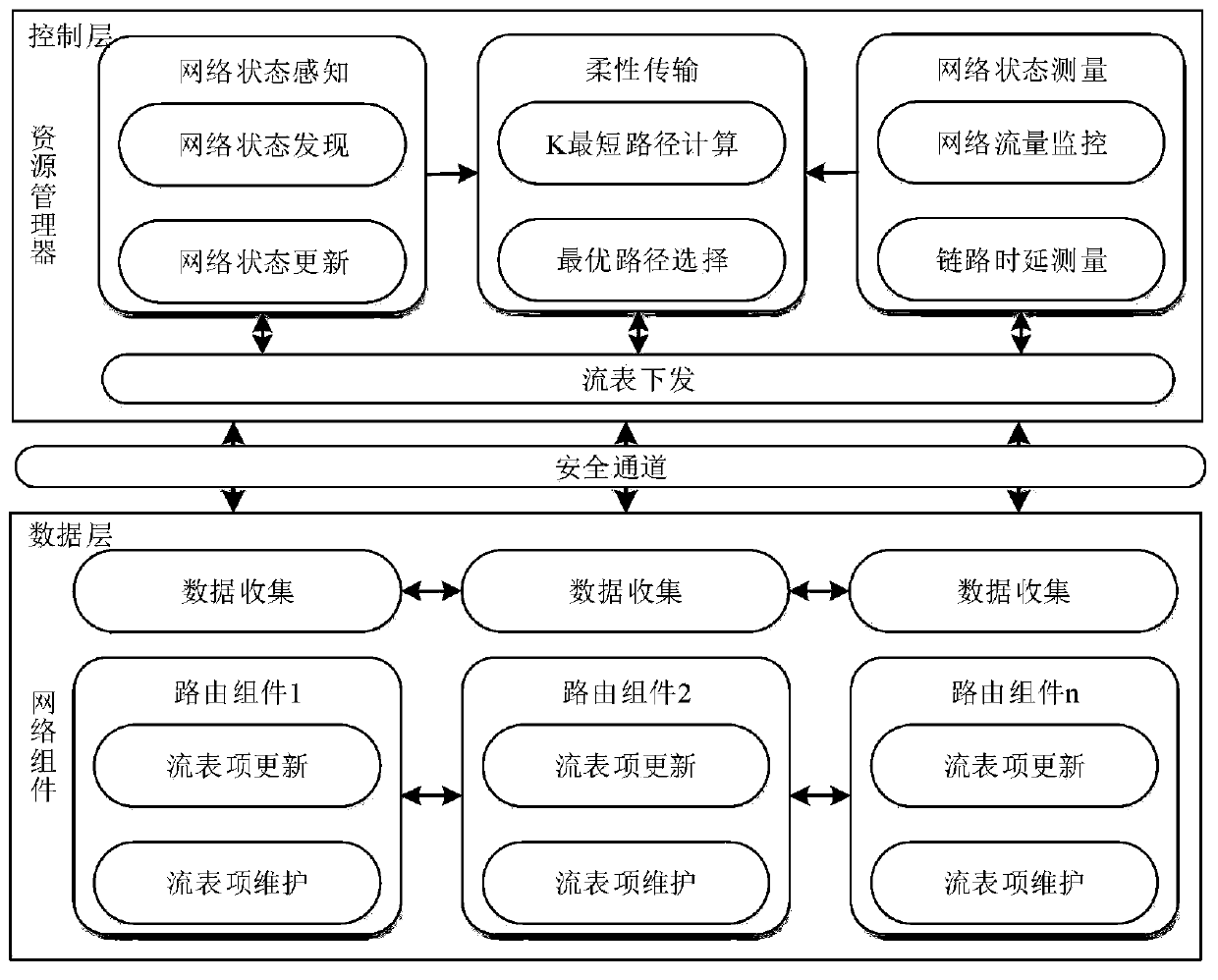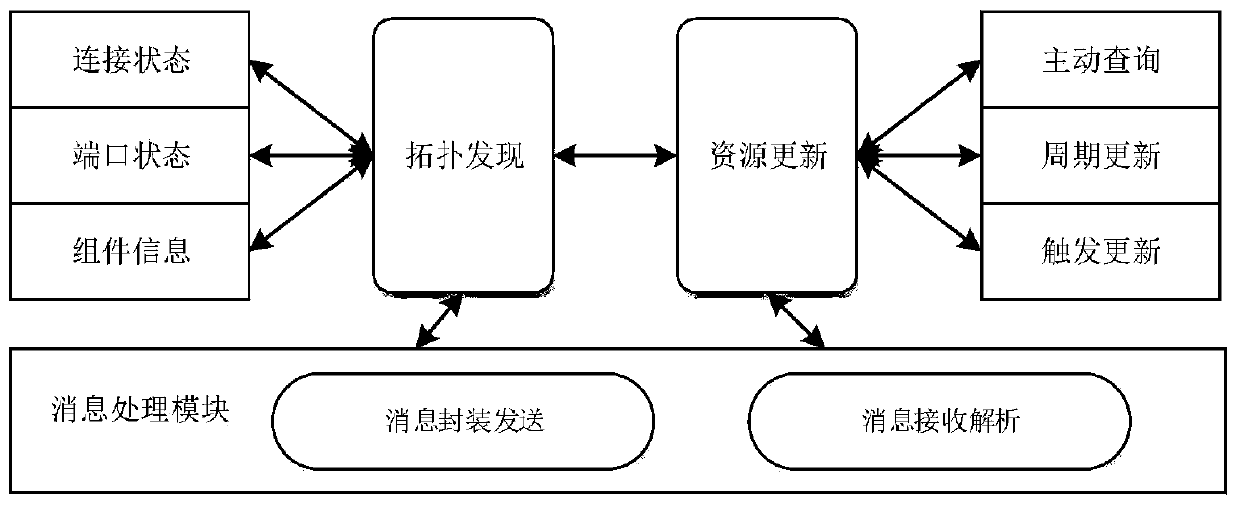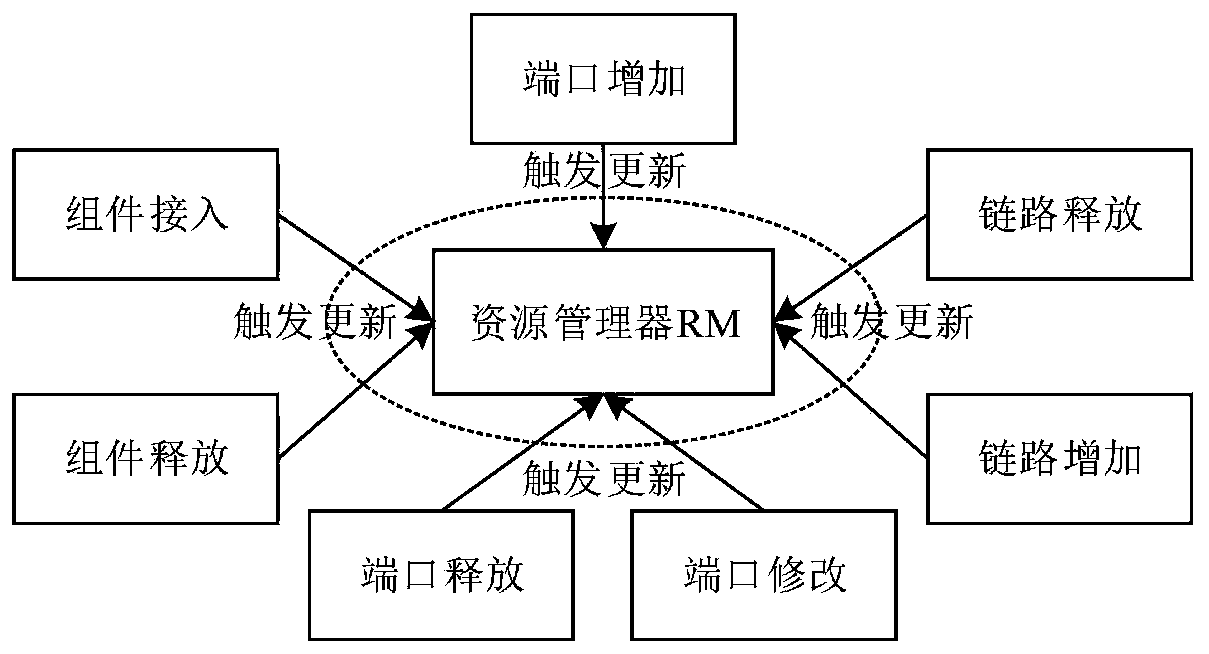A flexible data transmission system based on intelligent collaborative network
A technology of data transmission system and intelligent collaborative network, applied in the field of computer network, can solve the problems of no unified standard for traffic business division, network congestion, multi-task queue waiting at the same time, etc., to achieve link utilization, dynamic selection implementation, The effect of avoiding network congestion
- Summary
- Abstract
- Description
- Claims
- Application Information
AI Technical Summary
Problems solved by technology
Method used
Image
Examples
Embodiment 1
[0144] (1) Embodiment 1: When there is a service in the network
[0145] Assume that client C1 initiates a service request to server S1, and S1 provides services to client C1 through forwarding groups. Use wireshark to capture and analyze service data packets on ports N7-eth3, N7-eth4, and N7-eth5 respectively. It turns out that packets destined for C1 are captured only at N7-eth5. N7-eth5 is connected to the N4-eth2 interface, and there is only one single link between the routing component N4 and the client C1 to transmit data, so the route adapted by the resource manager for the (S1,C1) service is [N7,N4,N2, N1].
Embodiment 2
[0146] (2) Embodiment 2: when the service path fails
[0147] When the (S1, C1) service is in the transmission process, if the link fails, it is necessary to restore the link as soon as possible or find a backup path in the shortest time to ensure the stability and reliability of service transmission. In this flexible transmission method, because the resource manager calculates the K shortest paths in the route adaptation stage before the service transmission, in addition to sending the optimal path to the routing component, the remaining K-1 edges are stored in In paths, when the link is disconnected, the resource manager will send the optimal path among the K-1 paths to the routing component without needing to calculate the path through state awareness. On the one hand, it reduces the burden on the resource manager. On the other hand, it also minimizes the impact of failures on services.
[0148] Through the functional test in the previous step, it is known that the transmi...
Embodiment 3
[0149] (3) Embodiment three: when there are two kinds of services in the network
[0150]If the (S1, C1) service already exists in the network, at this time C2 also initiates a service request to the server S2, and S2 provides services to C2 by adapting the network group. Because the [N7, N4, N2, N1] path is already occupied by (S1, C1), the resource manager will calculate the optimal path according to the current network status. By capturing packets on the N7-eth3, N7-eth4, and N7-eth5 ports, the data packets sent to C2 are captured on the N7-eth3 port. Because there is only one link between the routing components N7 and N6, it can be determined that S2 sent The service data to C2 is transmitted through the path [N7, N6, N3, N1], and the resource manager adapts the path for the (S2, C2) service to [N7, N6, N3, N1].
[0151] (4) Embodiment 4: When there are three kinds of services in the network
[0152] Two services (S1, C1) and (S2, C2) already exist in the network. At thi...
PUM
 Login to View More
Login to View More Abstract
Description
Claims
Application Information
 Login to View More
Login to View More - R&D
- Intellectual Property
- Life Sciences
- Materials
- Tech Scout
- Unparalleled Data Quality
- Higher Quality Content
- 60% Fewer Hallucinations
Browse by: Latest US Patents, China's latest patents, Technical Efficacy Thesaurus, Application Domain, Technology Topic, Popular Technical Reports.
© 2025 PatSnap. All rights reserved.Legal|Privacy policy|Modern Slavery Act Transparency Statement|Sitemap|About US| Contact US: help@patsnap.com



